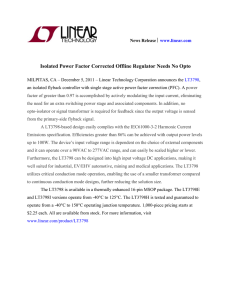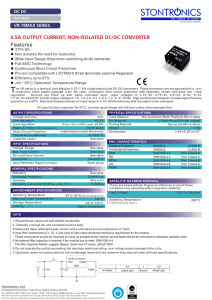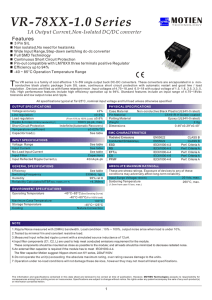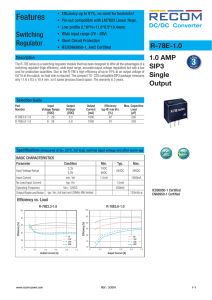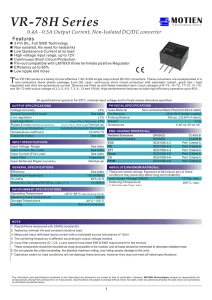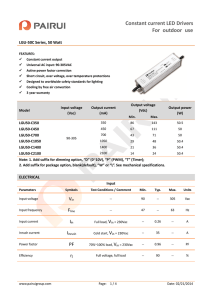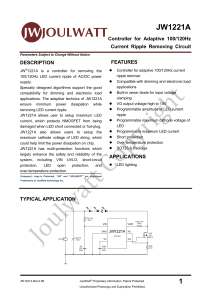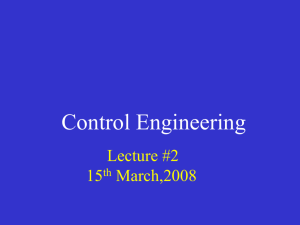6.331 Advanced Circuit Techniques
advertisement
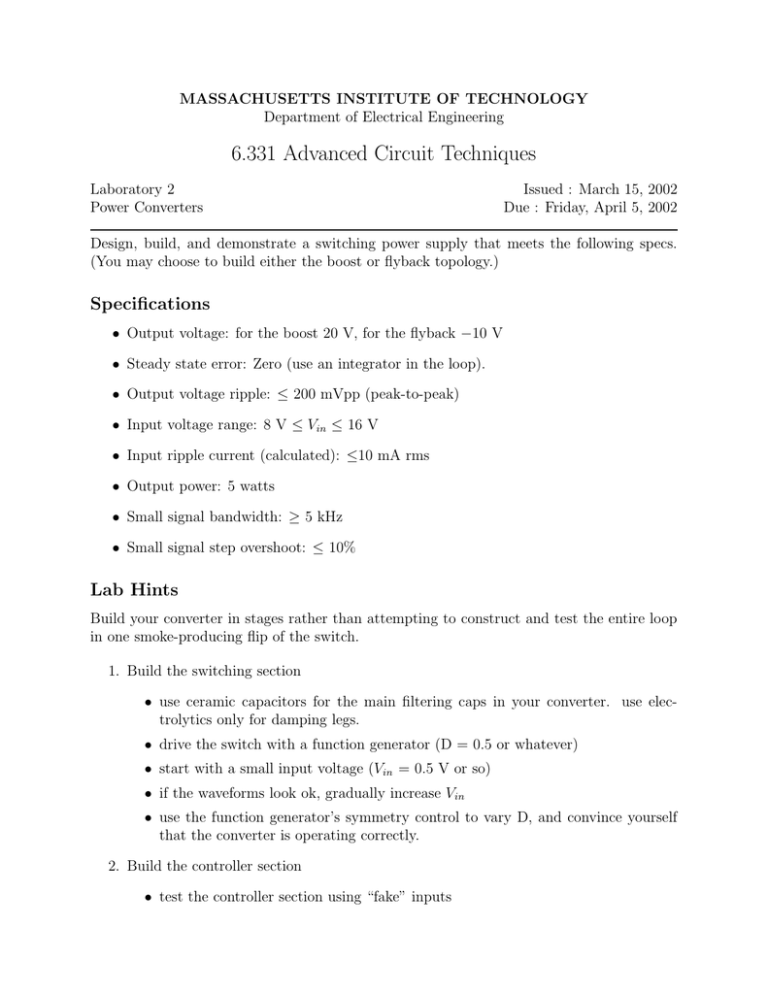
MASSACHUSETTS INSTITUTE OF TECHNOLOGY Department of Electrical Engineering 6.331 Advanced Circuit Techniques Laboratory 2 Power Converters Issued : March 15, 2002 Due : Friday, April 5, 2002 Design, build, and demonstrate a switching power supply that meets the following specs. (You may choose to build either the boost or flyback topology.) Specifications • Output voltage: for the boost 20 V, for the flyback −10 V • Steady state error: Zero (use an integrator in the loop). • Output voltage ripple: ≤ 200 mVpp (peak-to-peak) • Input voltage range: 8 V ≤ Vin ≤ 16 V • Input ripple current (calculated): ≤10 mA rms • Output power: 5 watts • Small signal bandwidth: ≥ 5 kHz • Small signal step overshoot: ≤ 10% Lab Hints Build your converter in stages rather than attempting to construct and test the entire loop in one smoke-producing flip of the switch. 1. Build the switching section • use ceramic capacitors for the main filtering caps in your converter. use electrolytics only for damping legs. • drive the switch with a function generator (D = 0.5 or whatever) • start with a small input voltage (Vin = 0.5 V or so) • if the waveforms look ok, gradually increase Vin • use the function generator’s symmetry control to vary D, and convince yourself that the converter is operating correctly. 2. Build the controller section • test the controller section using “fake” inputs • use lab kit supplies to power controller circuitry (not Vin supply) • verify proper operation before attempting to close the loop 3. Consider start-up details before closing the loop. • soft-start • current-limit • duty-cycle limit 4. Pray, sacrifice a token 3904, then power up the closed-loop system

